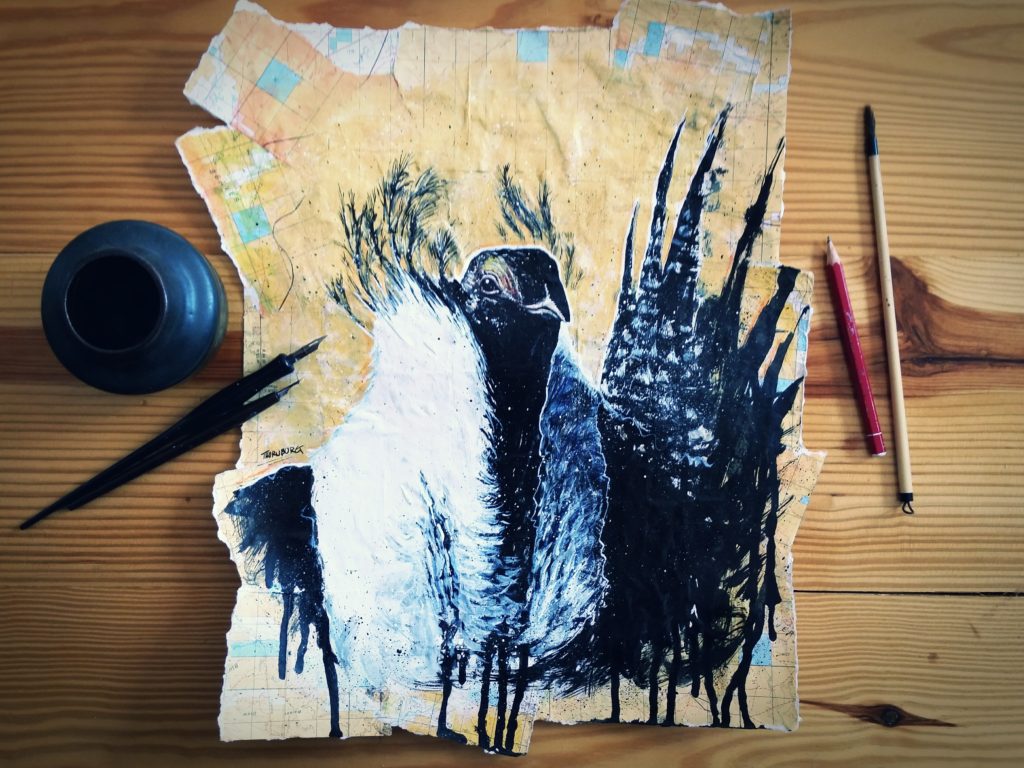
The Greater Sage-Grouse are upland birds unique to North America, known for their elaborate mating dances and entirely dependent on sagebrush for survival. Due to the “loss and fragmentation” of its sagebrush habitat the U.S. Fish and Wildlife Service determined in 2010 that the greater sage-grouse was warranted for protection under the Endangered Species Act. The sagebrush ecosystem supports a number of unique species, like the sage-grouse, that live nowhere else in the world. But while sagebrush is long-lived and tolerant to environmental extremes such as drought, the great “sagebrush sea” has been put under increasing pressure by agriculture, residential development, oil and gas drilling, and wind farms that disrupt the habitat and introduce invasive species like juniper and cheatgrass. Once killed by development or fire, the sagebrush takes a long time — decades or centuries — to reestablish itself, a consideration that is important in the discussion about species preservation.
During a review of the status of the greater sage-grouse in 2015 by U.S. Fish and Wildlife Service it was determined that “the greater sage-grouse remains relatively abundant and well-distributed across the species’ 173-million acre range and does not face the risk of extinction now or in the foreseeable future.” This finding was due largely to conservation efforts across the western United States, including amendments and revisions made to federal land use plans by the Bureau of Land Management and the U.S. Forest Service. States in the greater sage-grouse range also created or updated their own conservation plans to alleviate pressure on 90 percent of the species’ breeding habitat.*

The mixed-media piece, ‘Reclamation’, was inspired by this effort. A sage-grouse is boldly peering out from the composition, in a manner that seems triumphant. The bird itself is set upon a background comprised of a reclaimed and restructured topographical map from central Wyoming, a region designated by the U.S. Fish and Wildlife service as a ‘Priority Area of Conservation’. The piece is part celebration, part reminder. It celebrates the efforts undertaken to protect a vulnerable species, but the splashy rendering, torn edges, and topographical lines serve as a reminder of the looming threat. Development is not a historical threat, but rather a continual one. In an age of ravenous consumption and conversion of all things into commodities to be bought and sold — in an age of corporate homogenization — can that which is fragile and unique ever really be safe?
*Detailed information for this post was found on the U.S. Fish & Wildlife website, at https://www.fws.gov/greatersagegrouse/
**Image courtesy of Greater Sage-Grouse Conservation, Bureau of Land Management.
